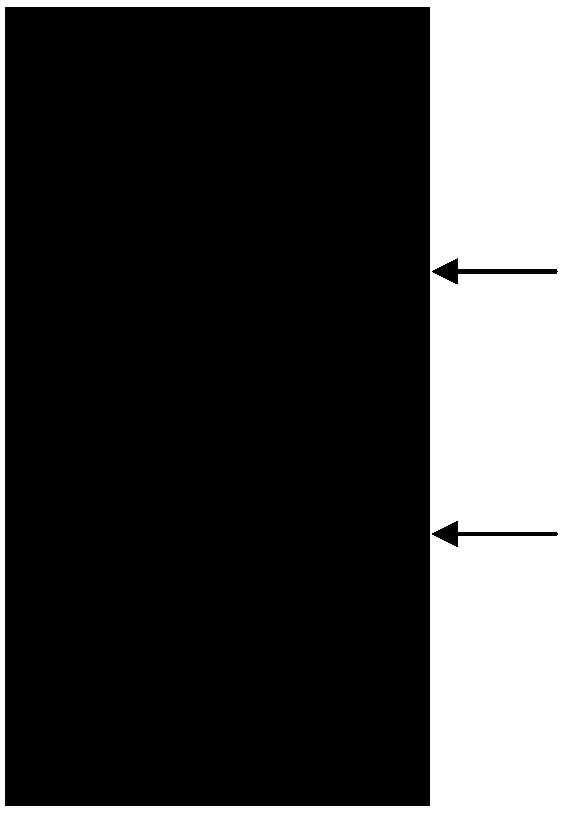Method for extracting and purifying antibody by utilizing magnetic beads
A technology of magnetic beads and antibodies, applied in the field of molecular biology, to achieve the effects of high extraction rate, improved work efficiency, and simple and efficient operation methods
- Summary
- Abstract
- Description
- Claims
- Application Information
AI Technical Summary
Problems solved by technology
Method used
Image
Examples
Embodiment 1
[0059] Example 1: Magnetic Bead Method Sclerotinia-producing Fungus Protein Extraction Kit
[0060] 1.1. Magnetic Bead Method Sclerotia-producing Fungus Protein Extraction Kit includes:
[0061] Step 1: Clamp the sclerotium of the cultured Rhizoctonia solani into a 1.5ml centrifuge tube under sterile conditions, the mass of the sclerotia should not be less than 300mg, use liquid nitrogen to freeze and grind to powder, add 300μL solution Ⅰ , shake and mix;
[0062] Step 2: Centrifuge at 12,000 rpm at 4°C for 1 min, and transfer the supernatant to a new tube;
[0063] Step 3: Add 300 μL of solution II, gently turn up and down 5-6 times;
[0064] Step 6: Add 50 μL of untreated magnetic bead suspension (the magnetic bead is made of nano-magnetic iron oxide, with a diameter of 1.2-2 mm) (purchased from Shanghai Carophen Biomedical Technology Co., Ltd., hydrophilic amino magnetic beads FE03001), After gently turning up and down, let it stand on ice for 10 minutes;
[0065] Ste...
Embodiment 2
[0101] Example 2: Protein Extraction of Samples Using Treated Magnetic Beads
[0102] According to the extraction process described in Example 1, the difference is: before the use of magnetic beads for protein extraction, the purchased magnetic beads are processed, and the processed magnetic beads are used to extract proteins. The practicality and implementation of other methods and reagents The magnetic bead extraction method in Example 1 is the same as the steps.
[0103] The magnetic beads are processed, and the processing method is as follows:
[0104] The magnetic beads were purchased from Shanghai Carboxyphene Biomedical Technology Co., Ltd. (hydrophilic amino magnetic beads FE03001, the average particle size of the nano-magnetic beads is 500 nm), and they were specially used for various coupling reactions. The magnetic beads were treated with 8mol / L oxychloropropane solution and 6mol / L 4-(2-aminoethyl)benzenesulfonyl fluoride hydrochloride solution soaked the magneti...
Embodiment 3
[0113] Example 3: Determination of protein adsorption capacity using processed magnetic beads
[0114] Use an ultrasonic cell disruptor to disrupt the cell wall of the bacteria to be tested (Staphylococcus aureus), and the specific method of disruption is as follows:
[0115] Bacteria were scraped and made into a suspension with distilled water (10 7 spore / mL), and then place the beaker containing the suspension in the crushing instrument, put the probe of the crushing instrument into the beaker and insert it into the spore suspension, set the crushing time to 10 min in an ice bath environment, and take out the sample for use after cell crushing The protein crude extract was obtained by phenol extraction, and then the crude extract was subjected to magnetic bead adsorption protein detection.
[0116] Add 3-5g magnetic beads of the present invention (the processed magnetic beads in embodiment example 2) to the broken sample liquid, place the beaker on the magnetic stand to c...
PUM
| Property | Measurement | Unit |
|---|---|---|
| Diameter | aaaaa | aaaaa |
| The average particle size | aaaaa | aaaaa |
Abstract
Description
Claims
Application Information
 Login to View More
Login to View More - R&D
- Intellectual Property
- Life Sciences
- Materials
- Tech Scout
- Unparalleled Data Quality
- Higher Quality Content
- 60% Fewer Hallucinations
Browse by: Latest US Patents, China's latest patents, Technical Efficacy Thesaurus, Application Domain, Technology Topic, Popular Technical Reports.
© 2025 PatSnap. All rights reserved.Legal|Privacy policy|Modern Slavery Act Transparency Statement|Sitemap|About US| Contact US: help@patsnap.com



